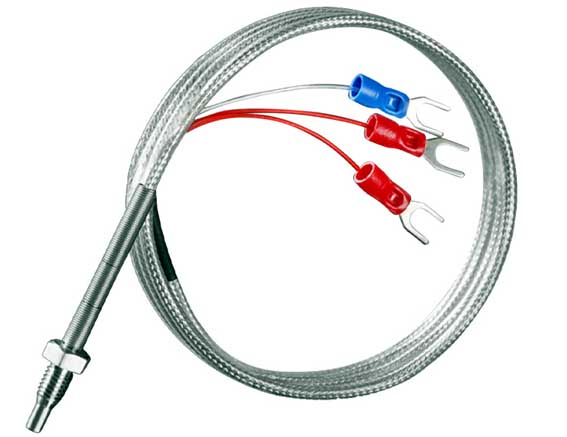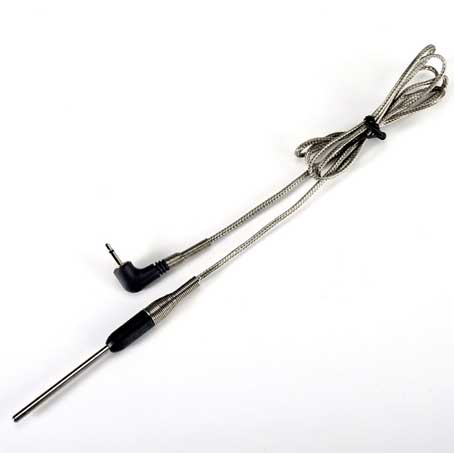Produktkategorien
- Thermischer Schutzschalter 20
- Sicherungskastenhalter 36
- Temperatursensor 67
- Thermischer schalter 64
- Autosicherung 19
- Sicherungen festschrauben 7
- Thermosicherung 32
- oberflächenmontierte Sicherungen 12
- Thermistor 22
- Sicherungshalter für Leiterplattenmontage 27
- Kabelbaum 6
- Flachsicherungshalter 17
- Thermostat 46
- Elektro-Sicherung 14
Produkt Tags
Thin Film Element Pt100 Sensor
Serie 111 direct immersion process threaded RTD probe sensors feature stainless steel sheaths and solder joints available in 1/8” NPT, 1/4” NPT, 3/8” NPT, 1/2” NPT or 3/4” NPT. A micro-embedded RTD probe is a miniature temperature sensor designed to be embedded in areas with limited space.
RTD Thin Film Element PT100 Temperature Sensor: PT100 10R 5%, 1-2176429-3; PT100A10RJ, 1-2176429-0; PT100 4R7 5%, PT100A4R7J: 1-2176429-1; 2-2176429-1; PT100 22R 5%, PT100C22RJ: 1-2176429-5; PT100 2K2 5%, PT10 0C2K2J: 2-2176429-7; PT100 330R 1%.
RTD thin film elements Pt100 are the most common type of RTD sensor and have a basic resistance value of 100 Ohm bei 0°C. Complies with DIN EN 60751.
Produktmerkmale:
RTD element type: platinum film temperature element;
Component packaging: Keramik;
Component material: Platin;
Wire count: 2;
The 623M Series Bolt-On RTD Probe Sensor is a small, multi-dimensional sensor for use in applications requiring legacy accessories or where space is limited.
Der 300 Series Stator RTD Sensor is a flat, rectangular, laminated sensor commonly referred to as a “stator bar” because they are inserted between the coils of the motor stator.
Serie 111 direct immersion process threaded RTD probe sensors feature stainless steel sheaths and solder joints available in 1/8” NPT, 1/4” NPT, 3/8” NPT, 1/2” NPT or 3/4” NPT.
A micro-embedded RTD probe is a miniature temperature sensor designed to be embedded in areas with limited space.
The 510M Series HVAC Averaging RTD Probe Sensor is designed for use in and around HVAC system intake manifolds and heating/cooling coils.
The 157M/158M Series Sanitary Meat RTD Probe Sensors are designed with a 316 stainless steel housing that is polished to a specific surface finish to reduce the area that can harbor bacteria.
Der 130 Series Spring Rebound Thermowell RTD Sensor is designed for applications where spring-rebound sensors require easy removal without shutting down the system.
Series 516M wall-mounted air sensing RTD probe sensors are commonly used to monitor indoor and outdoor air temperatures.
Der 310 Series Tip Sensitive Bearing RTD Probe Sensor is a tubular temperature sensor with a sensing element encapsulated in a copper alloy tip.
The 302F Series Toggle Stator RTD sensor, also known as an air or gas RTD, is used to measure the temperature of air entering and exiting motors and generators.
Constructed with a stainless steel sheath, Die 120 Series spring-rebound stainless steel RTD probe utilizes a spring to provide positive contact between the tip and process, reducing the sensor's time response and providing more consistent temperature readings.
500 Series Point Sensing RTD Probe Sensors feature a rigid stainless steel sheath with an element embedded in an aluminum tip.
Pt100, 2.0x2.3, Class B, PTFC101BC1G0; Pt100, 1.2x4.0, Class A, PTFM101A1G0; Pt100, 2.0x5.0, Class T, PTFD101T1A0; Pt100, 2.0x5.0, Class T, PTFD101T1G0.

2-wire PT100 / PT1000-Temperatursensor

3-wire PT100 / PT1000-Temperatursensor

-50-300 ℃ platinum thermal resistance sensor for ovens and barbecues
Kontaktiere uns
Warten auf Ihre E-Mail, Wir werden Ihnen innerhalb von 24 Stunden antworten 12 Stunden mit wertvollen Informationen, die Sie brauchten.
 English
English العربية
العربية Български
Български 粤语
粤语 中文(简体)
中文(简体) 中文(漢字)
中文(漢字) Nederlands
Nederlands Suomi
Suomi Français
Français Deutsch
Deutsch Ελληνικά
Ελληνικά Magyar
Magyar Italiano
Italiano 日本語
日本語 한국어
한국어 Polski
Polski Português
Português Română
Română Русский
Русский Slovenščina
Slovenščina Español
Español Svenska
Svenska ภาษาไทย
ภาษาไทย Türkçe
Türkçe Tiếng Việt
Tiếng Việt

